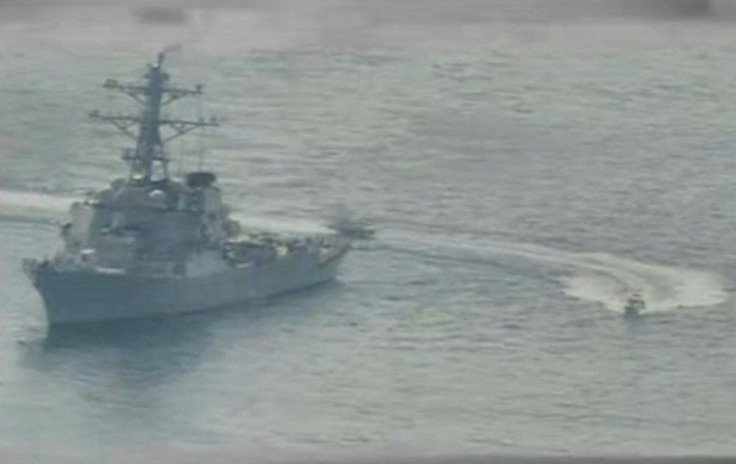Iran Navy Friendly-Fire Incident Puts Focus On Country's Deadly Missile Stockpile

KEY POINTS
- Iranian Navy is build a stockpile of anti-ship missiles
- In April, it announced a new missile with an extended range
- Iranian boats have been harassing U.S. Navy ships in the Persian Gulf
Iran's elite Revolutionary Guard Corps announced last month an anti-ship missile with extended range. The annoucement came amid rising tensions in the Persian Gulf between Iran and the United States. On Sunday (May 10), an anti-ship missile test by Iranian forces turned into a “friendly-fire” incident, showing how lethal those missiles could be in a shooting war. While testing a new missile during an exercise, the frigate Jamaran hit the Konarak, a navy logistics ship, killing 19 people.
According to news reports an Iranian navy "friendly fire" incident took place during a test of a new Iranian anti-ship missile. The missile fired by the Jamaran locked on to the Konarak, instead of the target the latter had just towed into place for the test. It is not known if the missile being tested was the one announced in April.
The accident took place because the Jamaran fired the missile prematurely, reports said. Konarak, which had towed the floating target to a designated position, did not have time to sail away to a safe distance before the missile was fired.
There are two Iranian seaborne forces deployed in the Persian Gulf, those of the conventional armed forces and those of the Revolutionary Guard Corps. The Iranian Revolutionary Guard Navy is equipped with a variety of domestically produced surface-to-surface missiles with a range of more than 430 miles (700 km). Iran has been investing weapons of assymetrical warfare for years as it tries to extend its influence in the Middle East and the Persian Gulf.
Combined with Iran’s speedboat fleet, the anti-ship missiles can pose a major threat to the U.S. Navy, which patrol the Persian Gulf, and can be used to block the Strait of Hormuz through which a large chunck of the world's oil exports flow.
According to IISS.org, Iran has stockpiled a large number of short- and medium-range anti-ship missiles. All of its weapons in this class are currently built around four Chinese missile families, the C-701, the C-704, the C-801/C-802 and the YJ-9. In Iran, the C-704 is known as the Nasr family, while both the C-701 and the YJ-9 are known as the Kosar family missiles.
Iranian anti-ship missiles are generally equivalent to the U.S. Navy’s Harpoon missile systems. Currently, all Iranian weapons in this class operate at subsonic speeds. However, Iran aims to add a supersonic speed capability to its anti-ship missiles, based on ramjet engine components called the RJ-HP1.
Tensions between the U.S. and Iran, which started building up after President Donald Trump pulled the United States out of a nuclear deal with Iran, have risen to a new high recent months. After an American drone killed Qasem Soleimani, the commander of the Iranian Revolutionary Guard Corps in January, Iranians fired a salvo of missiles at Iraqi military bases hosting U.S. forces.
Iran has also stepped up maritime patrols in the Persian Gulf. Iranian ships have maneuvered dangerouslyc lose to U.S. Navy vessels transiting the waterway, recently prompting Trump to order the Navy to sink any Iranian vessel posing a danger to its ships.
© Copyright IBTimes 2025. All rights reserved.





















